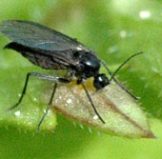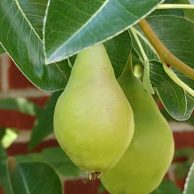 There are plenty of insects that eat plants and these can be damaging. At Harlequin’s we usually recommend supporting plant and soil health, creating diversity and allowing some insect damage before acting. With some pests, it is good to be prepared to act quickly, and sometimes there isn’t a good solution. Even poisons, which we never recommend, can be ineffective.
There are plenty of insects that eat plants and these can be damaging. At Harlequin’s we usually recommend supporting plant and soil health, creating diversity and allowing some insect damage before acting. With some pests, it is good to be prepared to act quickly, and sometimes there isn’t a good solution. Even poisons, which we never recommend, can be ineffective.
Here are some safe methods and products we have found helpful.[Read More]


 First, let’s count our blessings: the cool and wet spring has been great for plant growth (and of course, weeds galore!). The profusion of wildflowers this spring has been glorious, the foothills are still green going into July, and conditions for gardening are now quite pleasant. And we will have fruit on most of our fruit trees! Don’t forget to thin them to keep branches and trunks from breaking.
First, let’s count our blessings: the cool and wet spring has been great for plant growth (and of course, weeds galore!). The profusion of wildflowers this spring has been glorious, the foothills are still green going into July, and conditions for gardening are now quite pleasant. And we will have fruit on most of our fruit trees! Don’t forget to thin them to keep branches and trunks from breaking. Have you found that rabbits are becoming more rampant?
Have you found that rabbits are becoming more rampant? Many odor repellents can be helpful, including our non-toxic Plantskyyd (in liquid and pellet forms), and Bobbex liquid concentrate or ready-to-use spray. Although non-toxic, you may not want to use these products on edibles. Also, remember to reapply according to directions taking into account current precipitation and irrigation rates.
Many odor repellents can be helpful, including our non-toxic Plantskyyd (in liquid and pellet forms), and Bobbex liquid concentrate or ready-to-use spray. Although non-toxic, you may not want to use these products on edibles. Also, remember to reapply according to directions taking into account current precipitation and irrigation rates. Non-toxic Herbicides
Non-toxic Herbicides